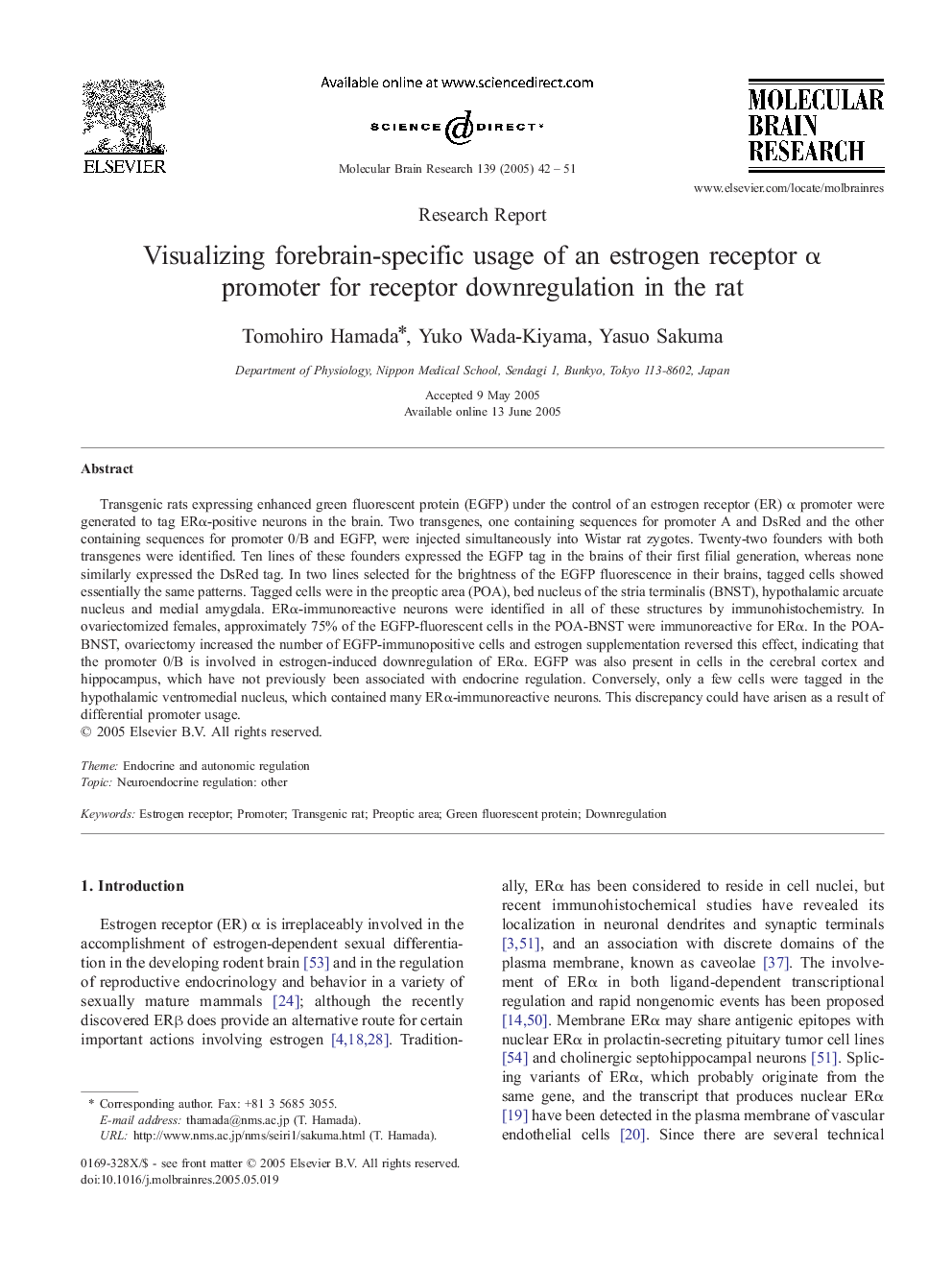| Article ID | Journal | Published Year | Pages | File Type |
|---|---|---|---|---|
| 9410701 | Molecular Brain Research | 2005 | 10 Pages |
Abstract
Transgenic rats expressing enhanced green fluorescent protein (EGFP) under the control of an estrogen receptor (ER) α promoter were generated to tag ERα-positive neurons in the brain. Two transgenes, one containing sequences for promoter A and DsRed and the other containing sequences for promoter 0/B and EGFP, were injected simultaneously into Wistar rat zygotes. Twenty-two founders with both transgenes were identified. Ten lines of these founders expressed the EGFP tag in the brains of their first filial generation, whereas none similarly expressed the DsRed tag. In two lines selected for the brightness of the EGFP fluorescence in their brains, tagged cells showed essentially the same patterns. Tagged cells were in the preoptic area (POA), bed nucleus of the stria terminalis (BNST), hypothalamic arcuate nucleus and medial amygdala. ERα-immunoreactive neurons were identified in all of these structures by immunohistochemistry. In ovariectomized females, approximately 75% of the EGFP-fluorescent cells in the POA-BNST were immunoreactive for ERα. In the POA-BNST, ovariectomy increased the number of EGFP-immunopositive cells and estrogen supplementation reversed this effect, indicating that the promoter 0/B is involved in estrogen-induced downregulation of ERα. EGFP was also present in cells in the cerebral cortex and hippocampus, which have not previously been associated with endocrine regulation. Conversely, only a few cells were tagged in the hypothalamic ventromedial nucleus, which contained many ERα-immunoreactive neurons. This discrepancy could have arisen as a result of differential promoter usage.
Keywords
Related Topics
Life Sciences
Neuroscience
Cellular and Molecular Neuroscience
Authors
Tomohiro Hamada, Yuko Wada-Kiyama, Yasuo Sakuma,
